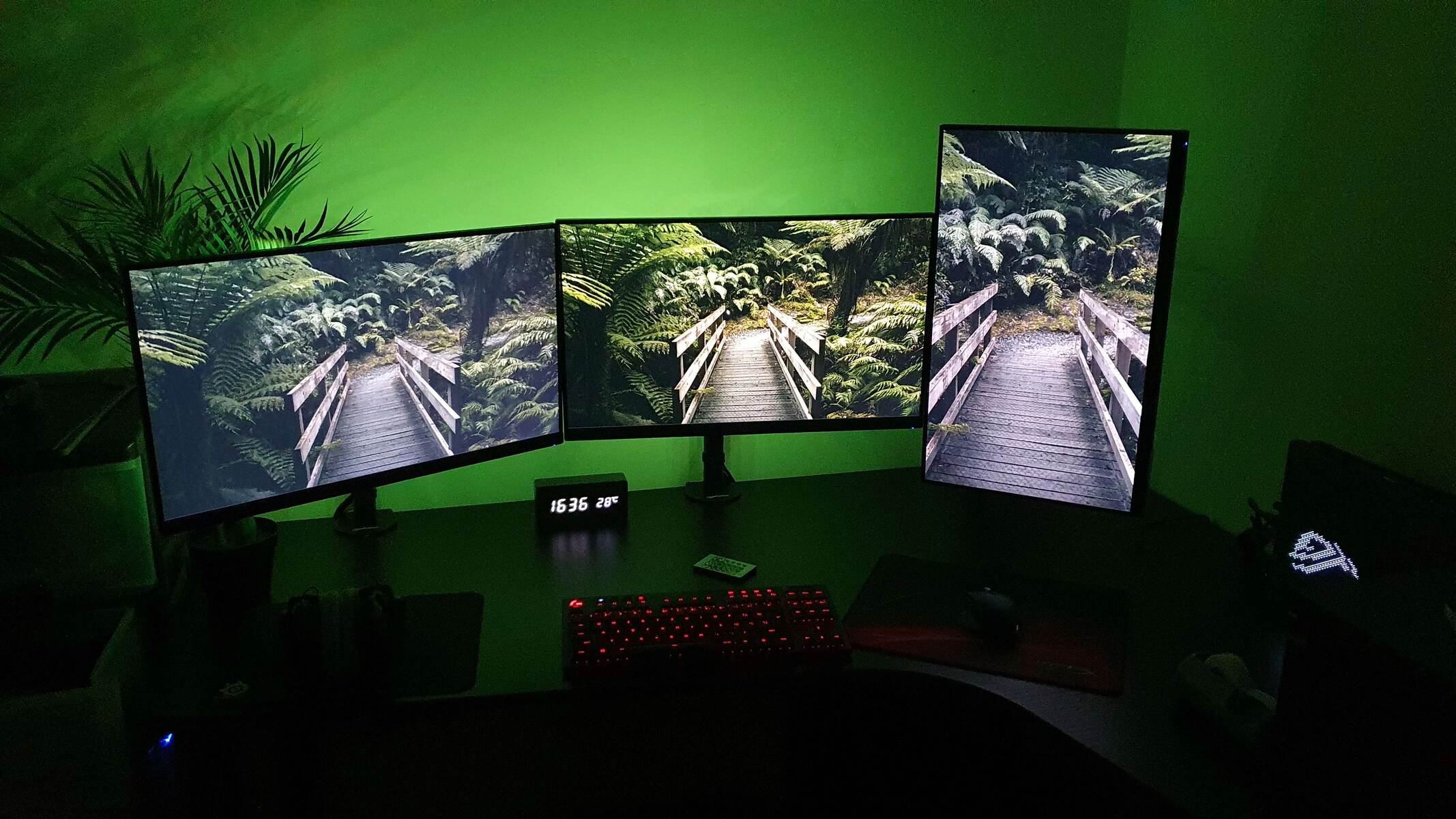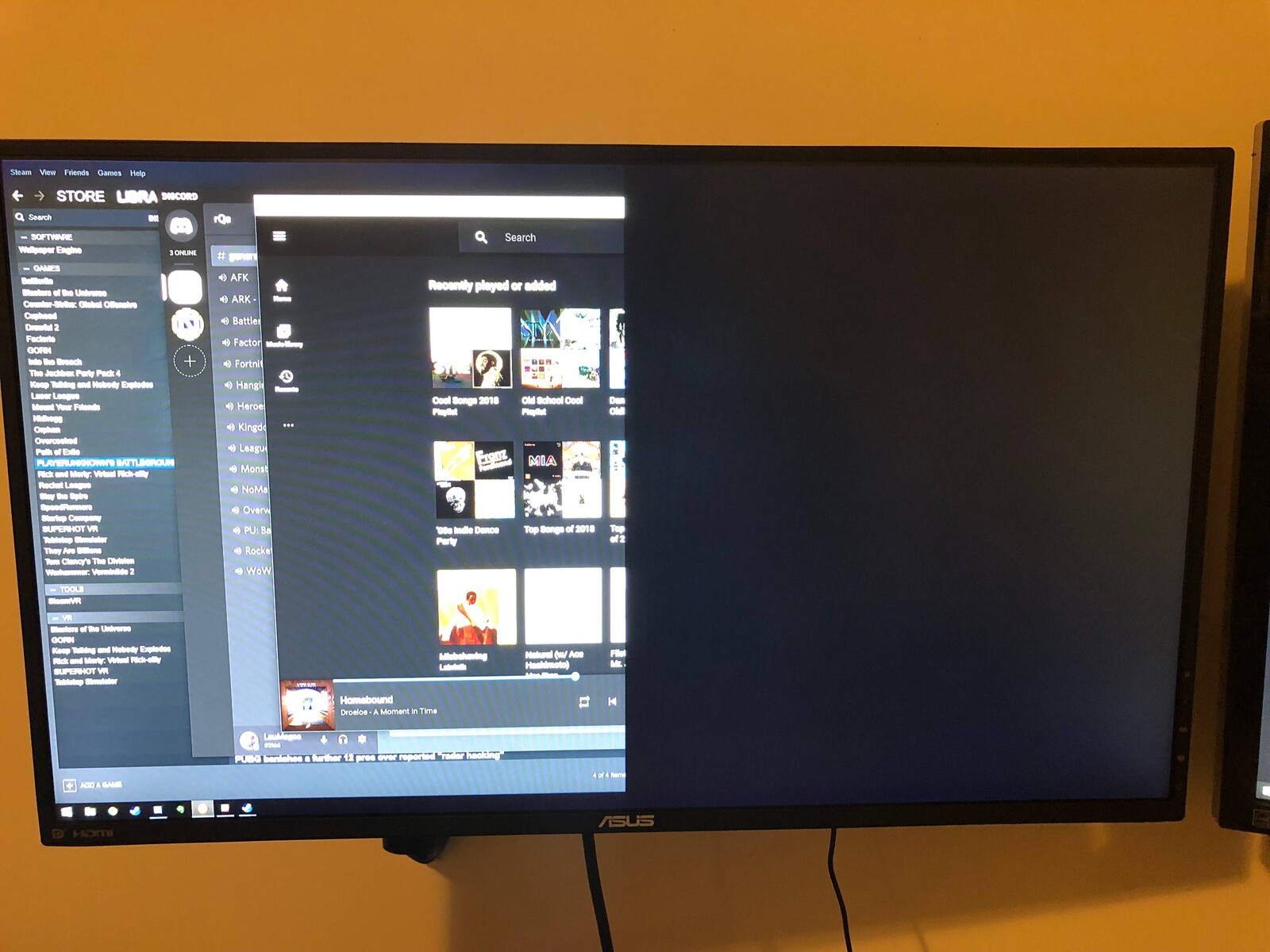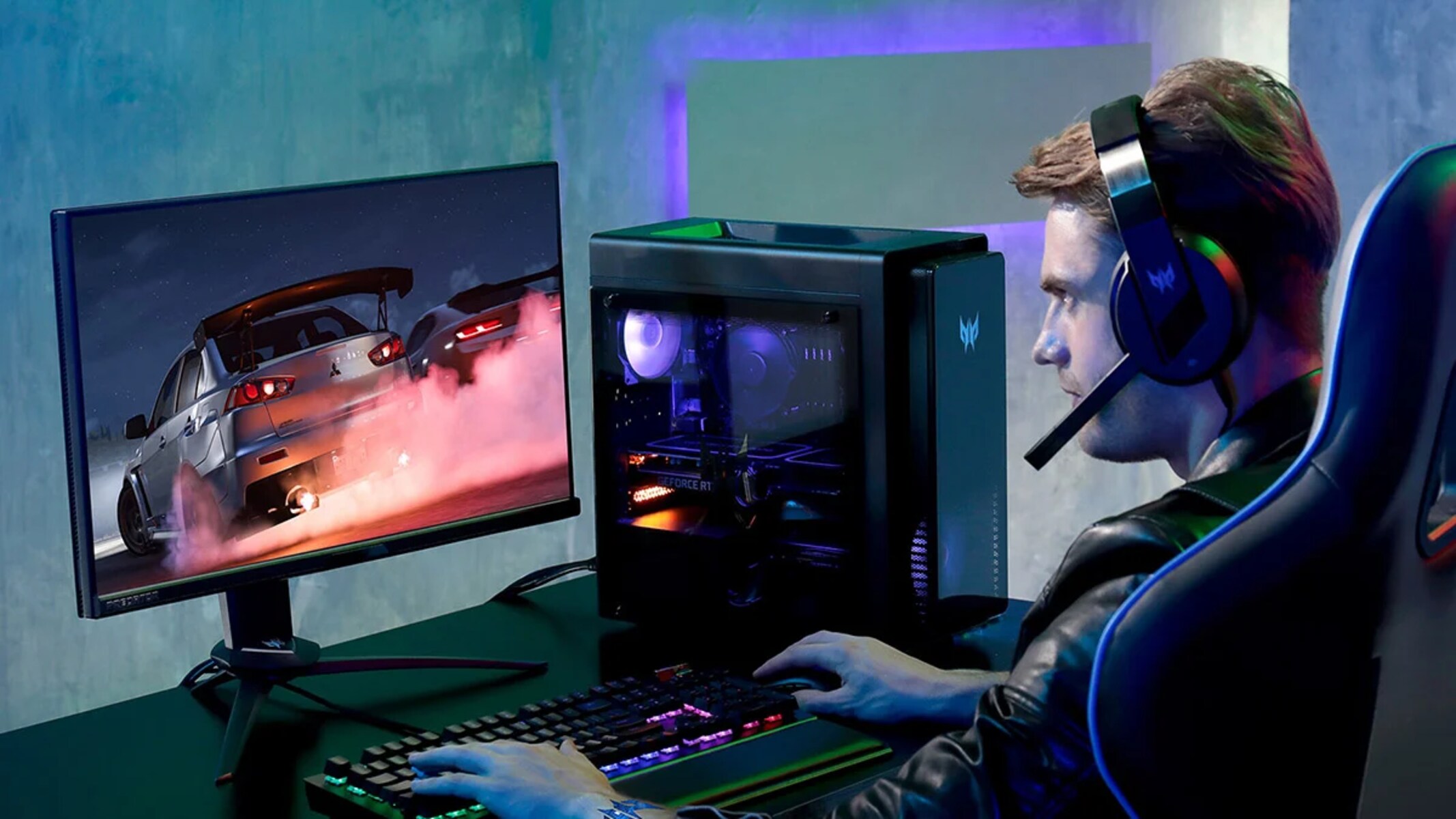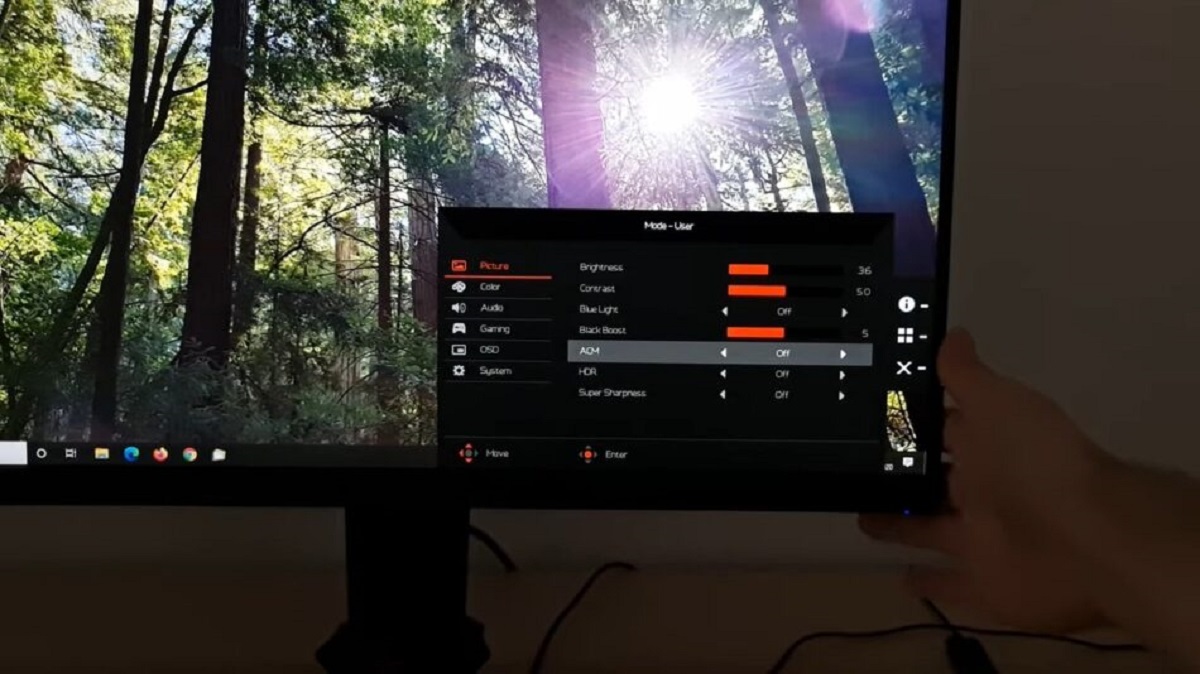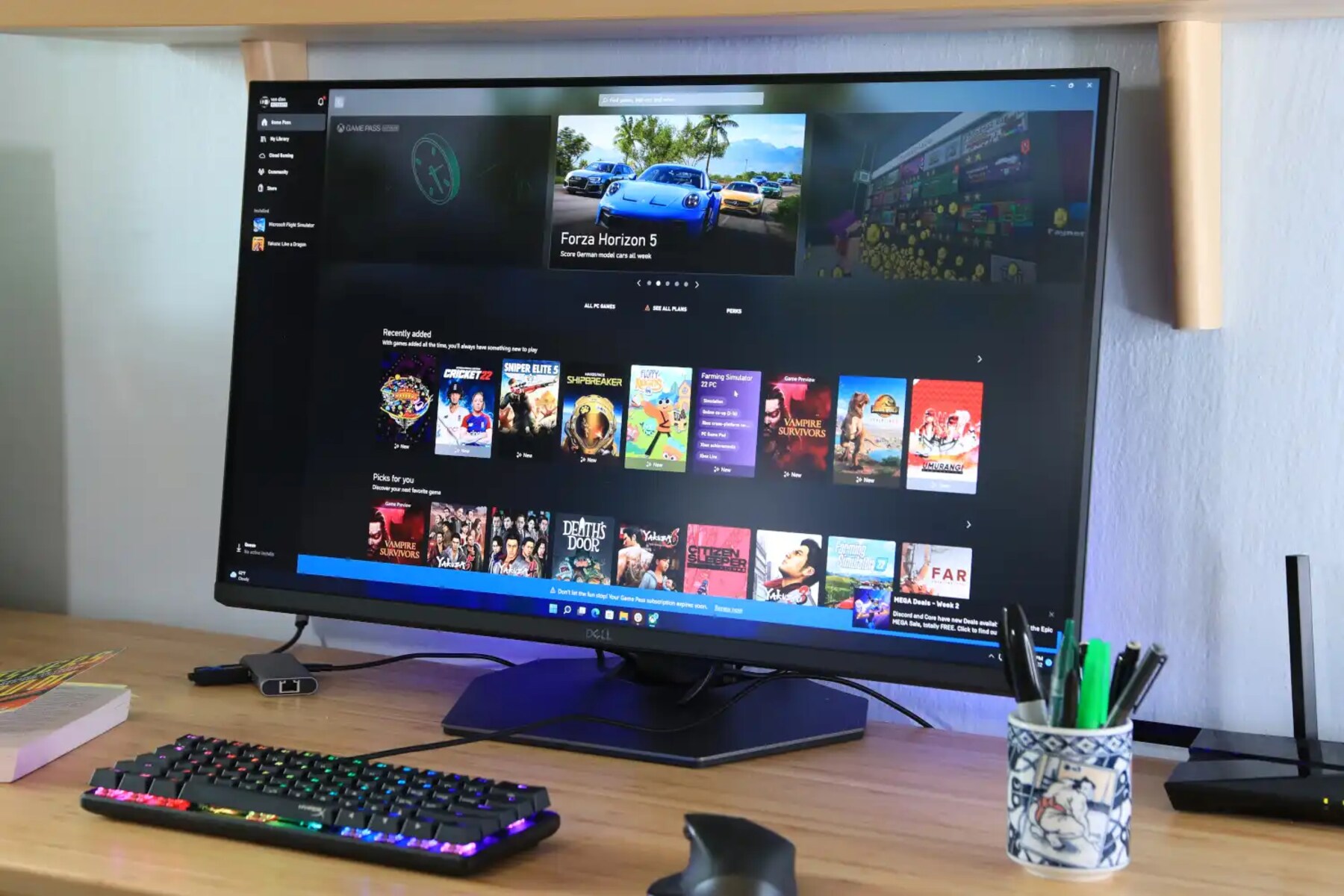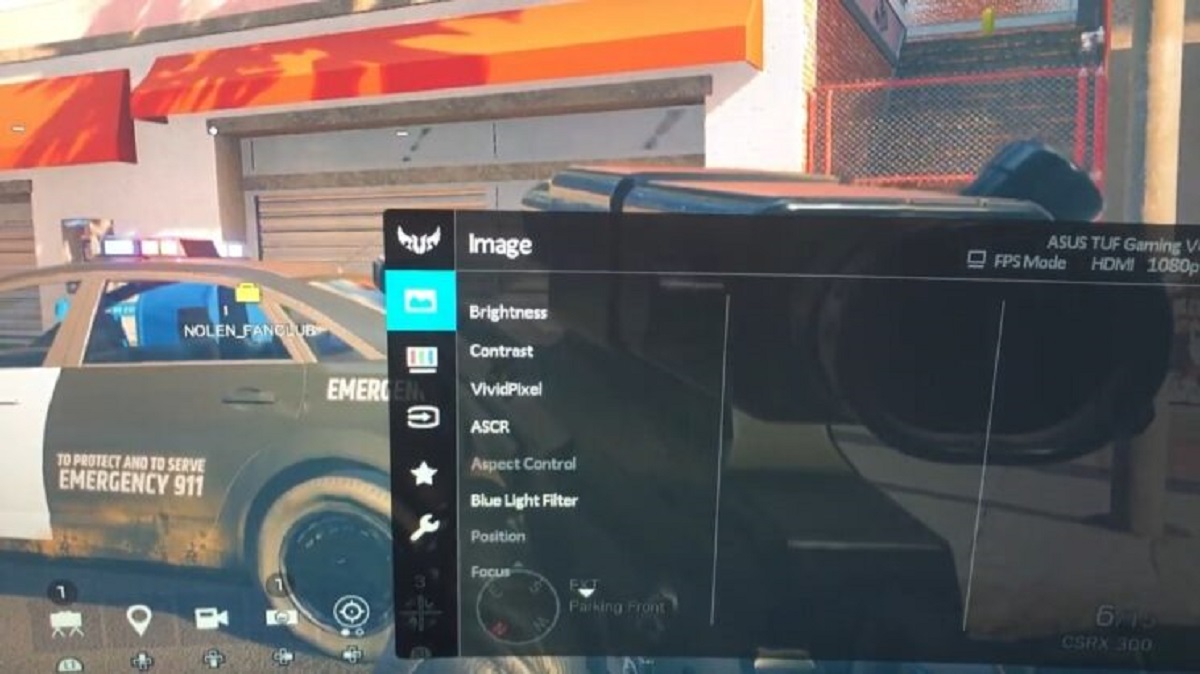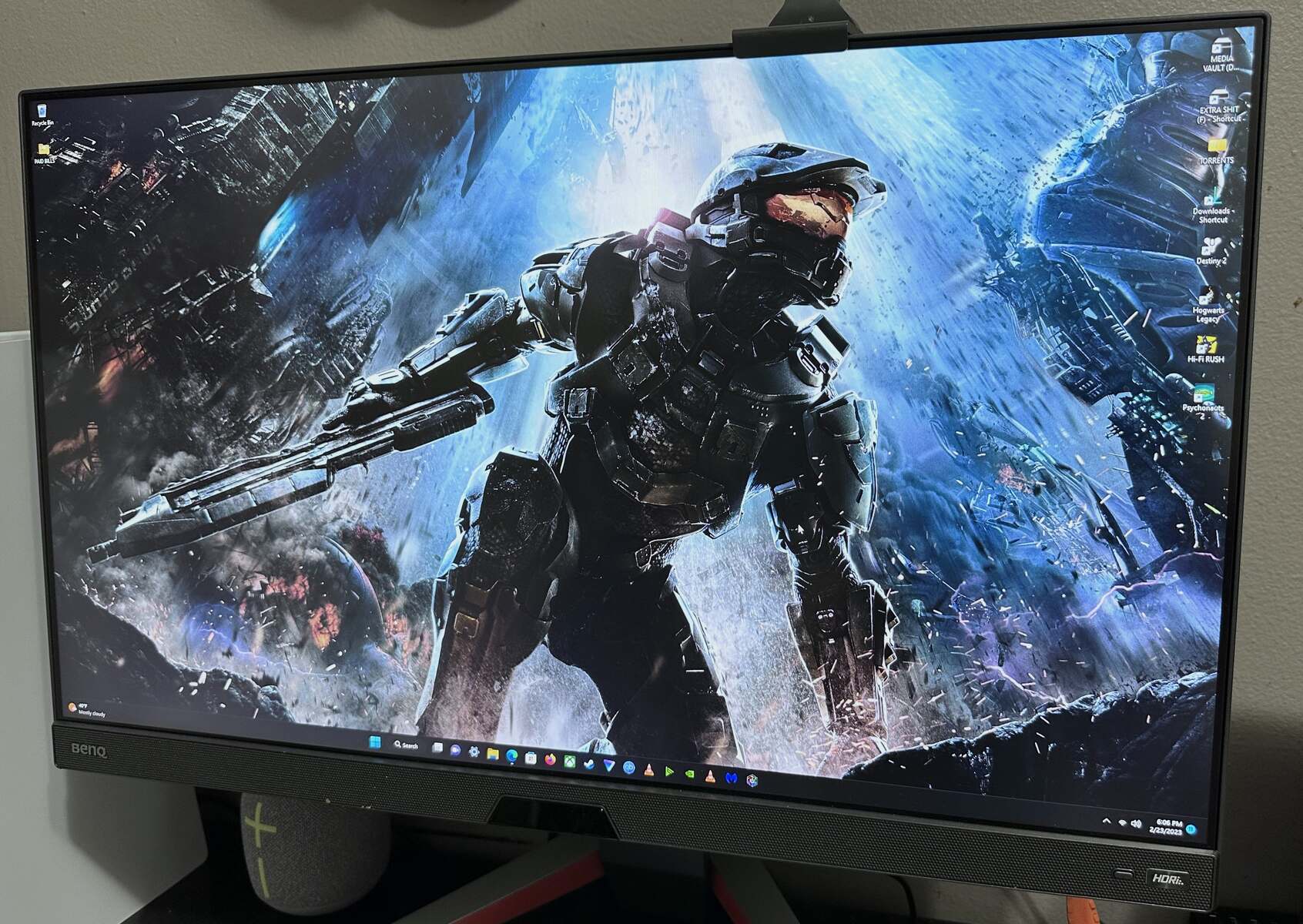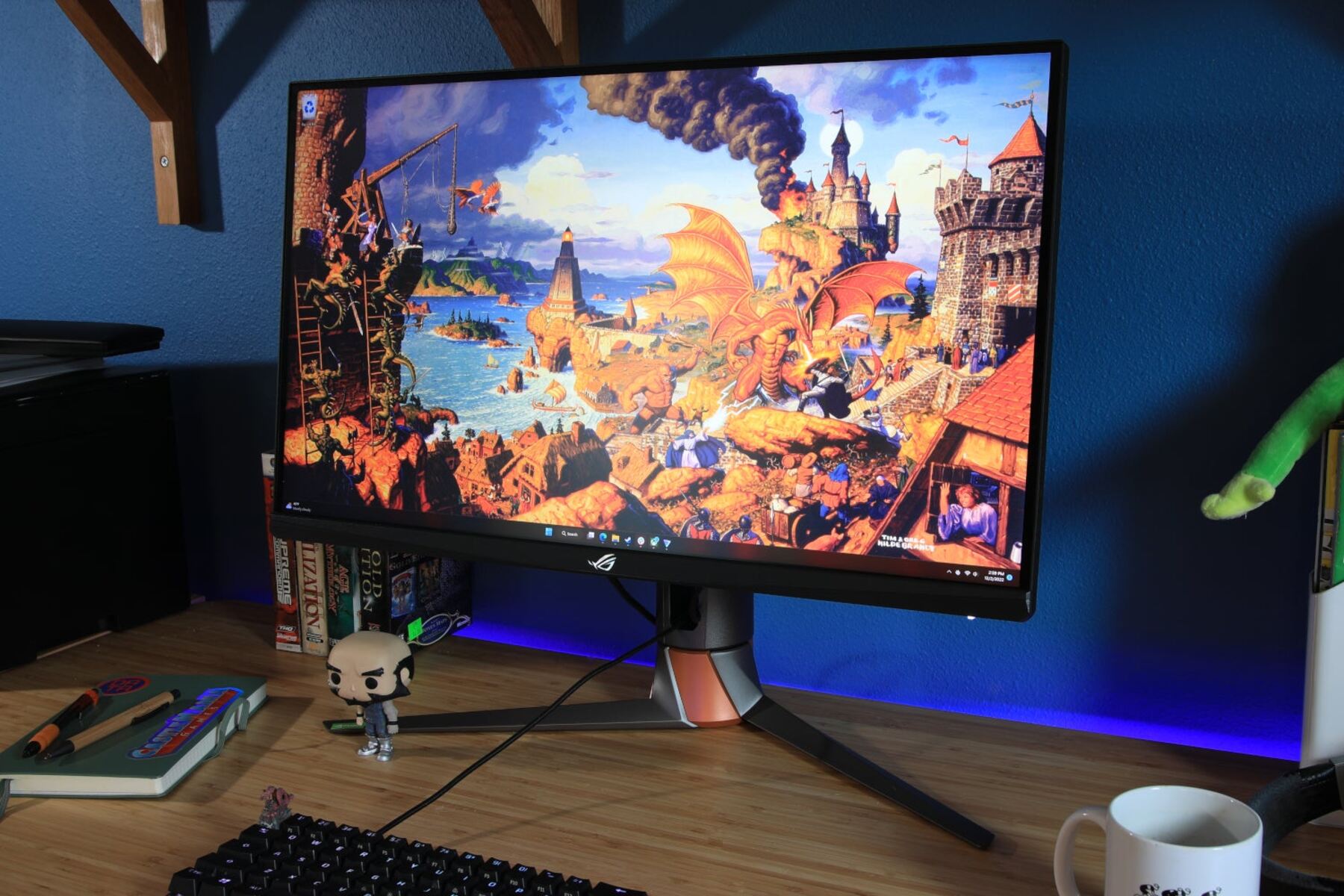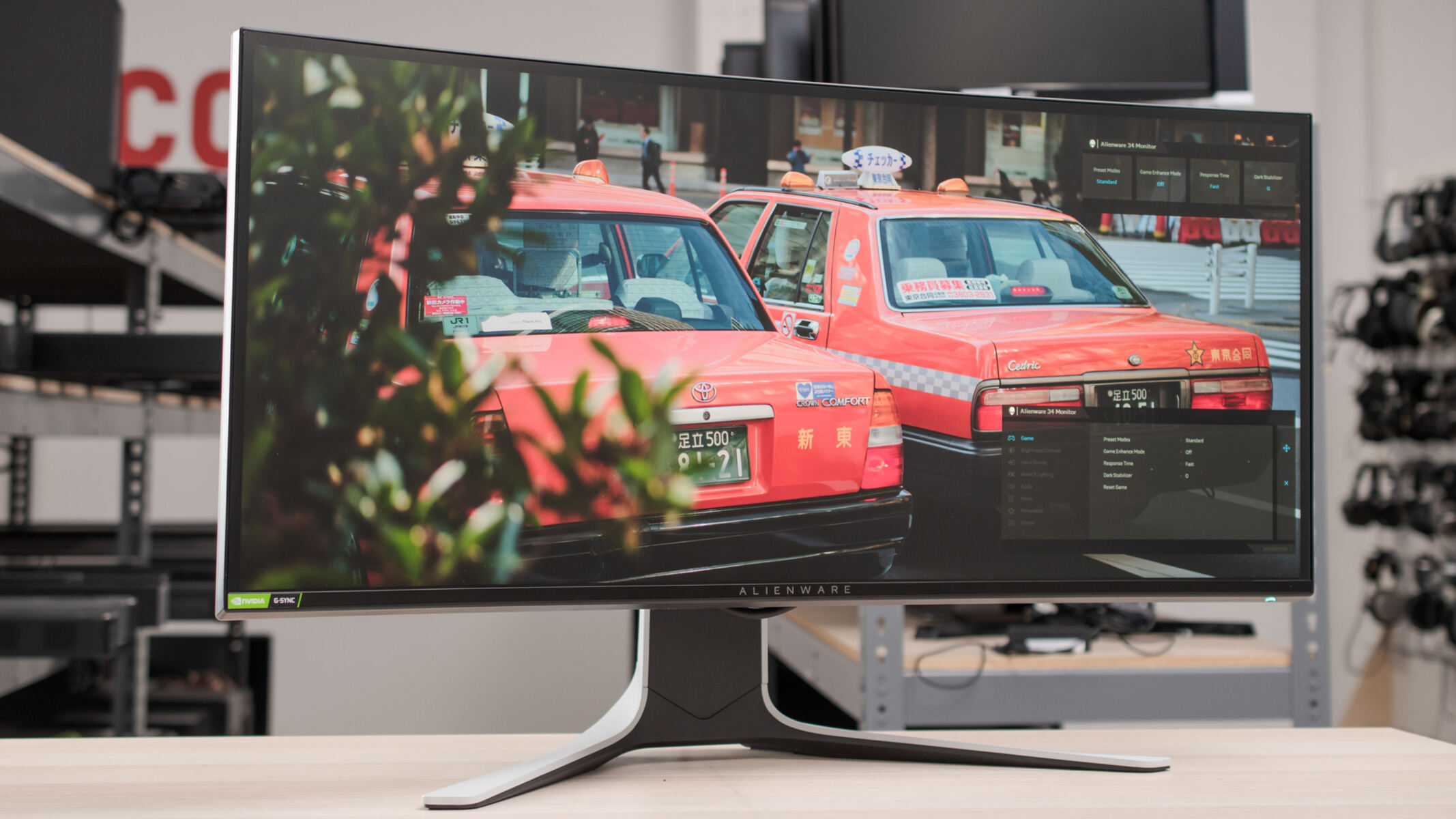Introduction
Welcome to the world of gaming, where every detail matters. As a gamer, you understand the importance of having top-notch equipment to enhance your gaming experience. From high-performance graphics cards to ergonomic keyboards, every aspect plays a crucial role in your gameplay. One key component that often gets overlooked is the monitor. A gaming monitor with optimal contrast and brightness settings can make a significant difference in your visual immersion and gameplay performance.
Contrast and brightness are two essential display settings that greatly impact the visuals on your gaming monitor. Contrast refers to the difference between the lightest and darkest parts of an image, while brightness determines the overall luminance or intensity of the picture. Finding the right balance between these settings can enhance the clarity, detail, and depth of your gaming visuals.
In this article, we will delve into the world of contrast and brightness settings for gaming monitors. We will explore why these settings are essential in creating an immersive gaming experience. Additionally, we will provide recommendations on the optimal contrast and brightness settings for your gaming monitor, along with some useful tips for adjusting them.
So, whether you’re a competitive gamer looking for an edge or a casual gamer seeking a more visually stunning experience, read on to discover the benefits of optimizing contrast and brightness settings in your gaming monitor.
Understanding Contrast and Brightness
Before we dive into the recommended settings, let’s take a closer look at what contrast and brightness actually mean in the context of gaming monitors. Understanding these concepts will help you grasp the significance of optimizing these settings for an enhanced gaming experience.
Contrast in a gaming monitor refers to the difference in brightness between the darkest and brightest parts of an image. It determines the level of detail and depth that can be seen on the screen. Higher contrast ratios produce more vibrant visuals, with darker blacks and brighter whites, resulting in better image clarity and improved overall visual quality.
Brightness, on the other hand, measures the overall intensity of the light emitted by the monitor. It affects the level of visibility of the on-screen content. Adjusting the brightness setting allows you to make the image either brighter or darker, depending on your preferences and the lighting conditions of your gaming environment.
Both contrast and brightness settings are interrelated and must be balanced to achieve optimal visual performance in gaming. A monitor with excessively high contrast and brightness settings can lead to image distortion, washed-out colors, and eye strain. Conversely, a monitor with low contrast and brightness settings may result in dull and lackluster visuals.
To achieve the best gaming experience, it is crucial to find the right balance between contrast and brightness settings. Keep in mind that the ideal settings may vary depending on factors such as the monitor’s panel type, the ambient lighting conditions in your gaming space, and personal preferences.
Now that we have a clear understanding of contrast and brightness, let’s explore why these settings are significant in gaming monitors and how they can impact your overall gaming experience.
Importance of Contrast and Brightness in Gaming Monitors
Contrast and brightness settings play a critical role in the overall gaming experience. Here’s why optimizing these settings is important for your gaming monitor:
- Enhanced Visual Immersion: The right balance of contrast and brightness settings can greatly enhance the visual immersion in your gaming. Higher contrast ratios ensure that dark scenes appear deeper and more detailed, making it easier to spot enemies or hidden objects. Adjusting the brightness level correctly enables you to see the game’s visuals with clarity and precision, immersing you further into the gaming world.
- Better Image Clarity: Optimal contrast settings ensure that details in both bright and dark areas of the image are clearly visible. This is particularly important in games where fine details, such as textures or intricate environments, can offer valuable information or enhance the visual experience. Adjusting the brightness settings ensures that the image is not too dim or too bright, allowing you to perceive the details with greater clarity.
- Eye Comfort: Straining your eyes while gaming for extended periods can be detrimental to your overall gaming experience. By fine-tuning the contrast and brightness settings, you can minimize eye fatigue. Excessive brightness can cause discomfort and strain, while insufficient brightness can make it harder to see details. Finding the right balance ensures optimal comfort for your eyes, allowing you to game for longer periods without strain.
- Optimized Gameplay Performance: The clarity and visibility offered by proper contrast and brightness settings can significantly impact your gameplay performance. By being able to see objects and details more clearly, you can react faster and make more informed decisions in fast-paced games. This can give you a competitive edge and improve your overall gaming skills.
With the significance of contrast and brightness settings in gaming monitors in mind, let’s move on to the recommended settings that can help you optimize your gaming visuals.
Recommended Contrast and Brightness Settings for Gaming Monitors
When it comes to finding the perfect contrast and brightness settings for your gaming monitor, there is no one-size-fits-all solution. However, we can provide some general recommendations to help you get started. Keep in mind that these settings can vary depending on the specific monitor model, personal preferences, and the lighting conditions in your gaming environment.
For contrast settings, a ratio of around 1000:1 is a good starting point. This range provides a balanced level of detail and depth in the image without sacrificing overall brightness. However, you can experiment with slightly higher or lower contrast ratios to find the setting that suits your preferences and the type of games you play. Remember that excessively high contrast settings can cause image clipping, where details in the dark or bright areas of the screen are lost.
Regarding brightness settings, it’s essential to find the right balance between visibility and eye comfort. An initial brightness setting of around 120-150 nits is recommended for gaming purposes. However, if you’re playing in a well-lit room, you may need to increase the brightness level to ensure adequate visibility. Conversely, for dimmer gaming environments, you can lower the brightness to reduce eye strain. Adjust the brightness gradually until you find the level that offers optimal visibility without causing discomfort.
It’s important to note that these recommended settings are not set in stone, and you should tailor them according to your preferences and the specific characteristics of your gaming monitor. Some monitors may have built-in presets for different game genres, such as FPS, RPG, or Sports, which may offer pre-calibrated contrast and brightness settings optimized for those specific game types. Experimenting with these presets can give you a starting point for finding your ideal settings.
Ultimately, the goal is to achieve a balance between contrast and brightness that enhances visual clarity, detail, and immersion without compromising comfort or causing eye strain. Spend some time tweaking and experimenting with different settings to find what works best for you.
Next, let’s explore some tips for adjusting contrast and brightness settings effectively to optimize your gaming experience.
Tips for Adjusting Contrast and Brightness
Adjusting the contrast and brightness settings of your gaming monitor requires a systematic approach to ensure optimal results. Here are some tips to help you fine-tune these settings effectively:
- Calibrate Your Monitor: Before making any adjustments, consider calibrating your gaming monitor. Calibration tools or software can help you achieve more accurate colors and contrast levels. This ensures that the adjustments you make are based on a reliable starting point.
- Start with Default Settings: If you’re unsure where to begin, reset your monitor’s contrast and brightness settings to their default values. This allows you to establish a baseline and make incremental adjustments from there.
- Refer to Manufacturer Recommendations: Check the manufacturer’s website or user manual for any recommended contrast and brightness settings specific to your monitor model. Manufacturers often provide suggested settings for optimal visual performance.
- Adjust in Proper Lighting Conditions: Make adjustments in the lighting conditions that most closely resemble your typical gaming environment. For example, if you primarily game in a dimly lit room, adjust the settings in similar lighting to ensure accuracy.
- Use Test Patterns and Images: Utilize test patterns or calibration images specifically designed for contrast and brightness adjustments. These images typically feature various shades of gray or black to help determine the optimal contrast level without losing details or causing distortion.
- Consider Ambient Lighting: Take into account the lighting conditions around your gaming area. Natural or artificial light sources can affect how you perceive the contrast and brightness settings. Adjust accordingly to account for any glare or reflections on the screen.
- Take Breaks to Rest Your Eyes: Remember to take regular breaks during long gaming sessions to prevent eye strain. Adjusting the contrast and brightness settings alone cannot substitute for giving your eyes regular rest and allowing them to recover.
Experiment with different contrast and brightness settings while keeping these tips in mind. Take note of the changes you make and the impact they have on your gaming visuals. With time and patience, you’ll find the perfect balance that suits your gaming preferences and enhances your overall gaming experience.
Conclusion
Optimizing the contrast and brightness settings of your gaming monitor is crucial for experiencing the best visual immersion and gameplay performance. By understanding the concepts of contrast and brightness, you can make informed decisions to enhance your gaming experience.
We explored the importance of contrast and brightness settings in gaming monitors, including how they enhance visual immersion, improve image clarity, provide eye comfort, and optimize gameplay performance. Remember that finding the right balance between these settings is key to achieving the best results.
We provided some recommended contrast and brightness settings as a starting point, but keep in mind that personal preferences and specific monitor models may require adjustments. Calibrating your monitor, referring to manufacturer recommendations, and adjusting in proper lighting conditions can all help you fine-tune these settings effectively.
Lastly, we offered some practical tips for adjusting contrast and brightness, such as utilizing test patterns, considering ambient lighting, and taking breaks to rest your eyes. Incorporating these tips into your adjustment process will further enhance your gaming visuals and comfort.
Now armed with the knowledge and recommendations provided, you can embark on a journey to find the optimal contrast and brightness settings that cater to your gaming preferences and maximize your gaming experience.







